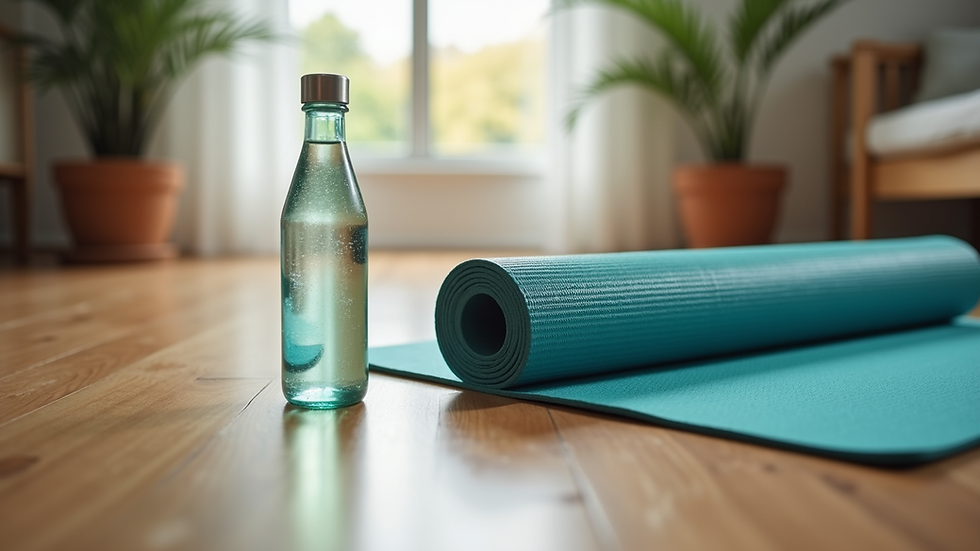Effective Techniques for Reducing Stress
- Shivon waterhouse
- Aug 31
- 4 min read
Stress can feel overwhelming at times. I know how it sneaks into our daily lives, making even simple tasks seem harder. But the good news is, there are gentle and natural ways to ease that tension. Over time, I’ve discovered that small, mindful changes can make a big difference. Let’s explore some natural stress reduction tips that you can start using today to bring more calm and balance into your life.
Embracing Natural Stress Reduction Tips for Everyday Calm
When stress builds up, it’s easy to feel stuck. But nature offers us many simple tools to help unwind. One of my favourite ways to reduce stress is by connecting with the outdoors. Even a short walk in a nearby park or garden can refresh your mind and body. The fresh air, the sound of birds, and the greenery all work together to soothe your nervous system.
Another natural tip is to focus on your breathing. Deep, slow breaths can calm your heart rate and clear your mind. Try this: breathe in slowly through your nose for a count of four, hold for four, then breathe out gently through your mouth for four. Repeat this a few times whenever you feel tension creeping in.
Adding gentle stretches or yoga to your routine can also help. These movements release physical tension and encourage mindfulness. You don’t need to be an expert; even simple stretches at your desk or in your living room can make a difference.

How Mindfulness Supports Stress Relief
Mindfulness is a powerful tool that I’ve found incredibly helpful. It means paying attention to the present moment without judgement. When we practice mindfulness, we stop worrying about the past or future and focus on what’s happening right now.
One easy way to start is by noticing your senses. What can you see, hear, smell, or feel? This simple act can ground you and reduce anxious thoughts. You might try a short mindfulness meditation, where you sit quietly and focus on your breath or a calming word.
Journaling is another mindful practice that helps me. Writing down my thoughts and feelings allows me to process stress and gain clarity. You don’t need to write a lot—just a few sentences about what’s on your mind can be enough.
If you want to explore more about reducing stress techniques, there are many online resources that offer guided meditations and mindfulness exercises. These can be a gentle way to build your practice and find what works best for you.
What is the Most Effective Technique to Reduce Stress?
It’s natural to wonder which technique works best. The truth is, the most effective method is the one that fits your lifestyle and feels right for you. For me, combining mindfulness with physical activity has been a game-changer.
Exercise releases endorphins, which are natural mood boosters. Even a short walk, some light stretching, or dancing to your favourite song can lift your spirits. Pairing this with mindful breathing or meditation helps deepen the sense of calm.
Another effective approach is creating a daily routine that includes moments of rest and self-care. This might mean setting aside 10 minutes each morning for meditation or a calming cup of tea without distractions. Consistency helps your body and mind learn to relax more easily.
Remember, it’s okay to try different techniques and see what feels best. Stress relief is a personal journey, and there’s no one-size-fits-all answer.

Practical Steps to Incorporate Stress Reduction into Your Day
Making time for stress relief can feel challenging, especially when life is busy. But small changes can fit easily into your routine. Here are some practical steps I recommend:
Start your day with intention - Take a few minutes to breathe deeply or set a positive intention for the day.
Take mindful breaks - Pause every hour to stretch or breathe deeply, even if just for a minute.
Limit screen time - Too much screen exposure can increase stress. Try to step away from devices regularly.
Connect with nature - Spend time outside, even if it’s just your garden or balcony.
Practice gratitude - Write down three things you’re grateful for each day to shift your focus to the positive.
These small habits build up over time and create a foundation of calm that supports you through stressful moments.

Creating a Supportive Environment for Stress Relief
Your surroundings play a big role in how you feel. I’ve found that creating a peaceful space at home or work can help reduce stress naturally. This might mean decluttering your desk, adding plants, or using soft lighting.
Consider incorporating calming scents like lavender or chamomile through candles or essential oils. These can gently soothe your senses and create a relaxing atmosphere.
It’s also important to set boundaries. Saying no to extra commitments when you’re feeling overwhelmed is a form of self-care. Protecting your time and energy allows you to recharge and face challenges with more resilience.
Finally, don’t hesitate to reach out for support. Talking to a friend, family member, or a mindfulness coach can provide comfort and guidance. You’re not alone on this journey.
I hope these natural stress reduction tips inspire you to find moments of peace in your day. Remember, small steps can lead to big changes. Be kind to yourself as you explore what works best for you. With patience and practice, calm and balance are within reach.



Comments